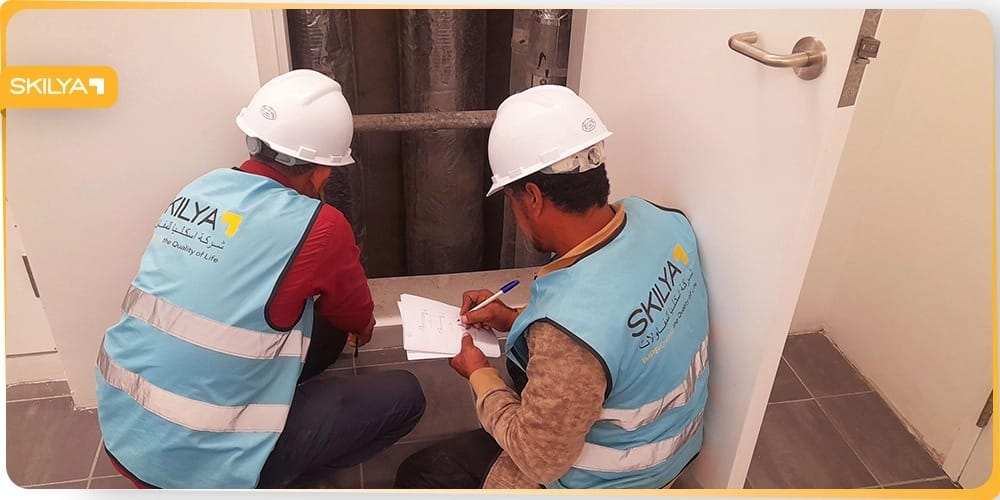Driven by our commitment to construction quality, we believe that completing a project doesn’t mark the end of the journey it marks the beginning of its real performance. Buildings, industrial facilities, warehouses, and steel structures all require consistent monitoring to remain safe, efficient, and fully functional.
This is where skilya follow-up and maintenance come into play. They are not optional services but essential pillars that determine whether a project continues to deliver value or becomes a burden over time.
In this article, we uncover why continuous follow-up and proper maintenance can significantly extend the lifespan of any project and protect your investment for years to come.
Why follow-up matters after project completion
Follow-up is more than just checking on a completed structure it’s a proactive process that ensures the project is performing exactly as designed.
Here’s why it’s critical:
1. Early detection of issues
Even the highest-quality construction projects may face minor issues over time. Follow-up helps detect these problems early before they turn into major costs or safety hazards.
2. Ensuring compliance and safety
Many industries such as logistics, manufacturing, and commercial operations follow strict safety standards. Regular follow-up ensures the facility remains compliant with regulations.
3. Performance optimization
Follow-up visits help identify areas where energy efficiency, structural behavior, or workflow layout can be improved, reducing operational costs for the client.
4. Building client trust
When a contractor continues to check in after project delivery, it reassures clients that their investment is in safe hands and that the contractor stands behind the quality of their work.
The importance of preventive maintenance
Maintenance is the protective layer that keeps your project operating smoothly over time. Instead of waiting for structures or systems to fail, preventive maintenance ensures everything stays in optimal condition.
1. Extends the lifespan of the facility
Routine maintenance helps prevent structural deterioration, paint or coating damage, corrosion, cracking, or issues with mechanical systems.
2. Saves money in the long run
Preventing problems is always cheaper than fixing them after failure. A small issue caught early can save thousands in repair costs.
3. Minimizes downtime
For commercial and industrial facilities, downtime is expensive. Proper maintenance prevents unexpected shutdowns and keeps business operations running without interruptions.
4. Protects health & safety
Well-maintained facilities reduce the risk of accidents, equipment failure, or hazards that may endanger workers or visitors.
Follow-up and maintenance in modern construction
The construction industry in the GCC is advancing rapidly, with higher expectations for quality and long-term performance. Follow-up and maintenance services have become strategic tools that:
- Improve operational efficiency
- Reduce long-term ownership costs
- Enhance building durability
- Increase property value
- Ensure consistent compliance with local regulations
Today, clients expect more than just delivery they expect lifetime reliability.
What makes a good follow-up & maintenance program?
1. Regular scheduled visits
A structured maintenance calendar ensures that inspections, cleaning, and minor repairs happen on time before any issue escalates.
2. Site evaluation reports
Professional follow-up includes detailed reports that document the condition of the facility and highlight potential risks or required actions.
3. Skilled technical teams
Qualified engineers and technicians can assess structural conditions, coatings, flooring systems, steel integrity, and mechanical elements accurately.
4. Quick response to client requests
A strong maintenance program ensures the contractor is always ready to assist the client, whether it’s for an inspection, repair, or emergency support.
How follow-up supports different types of projects
Industrial projects
Factories and production lines depend heavily on continuous operations. Follow-up and maintenance prevent unexpected breakdowns that can halt production.
Warehouses & logistics centers
Proper maintenance ensures the flooring systems, loading docks, and steel structures remain stable under heavy daily loads.
Commercial buildings
From malls to office complexes, scheduled maintenance preserves aesthetics, safety, and efficiency.
PEB & steel structure projects
Steel structures require periodic inspection to ensure coating protection, bolt tightening, corrosion control, and overall structural stability.
The GCC market and the demand for reliable maintenance
With the rapid growth in construction across Saudi Arabia, Kuwait, Qatar, and the UAE, clients are now prioritizing long-term project performance over short-term project delivery.
This shift has increased the demand for contractors who offer full lifecycle support, not just construction execution.
Follow-up and maintenance are no longer “extra services” they are now expected standards in any high-quality contracting company.
About Skilya – your partner in long-term construction reliability
Skilya is known for delivering durable, high-quality construction and steel structure projects across Saudi Arabia but what truly sets us apart is our ongoing commitment to follow-up and maintenance.
We don’t just deliver projects; we support them throughout their lifetime.
Our engineering teams provide scheduled inspections, detailed performance reports, and preventive maintenance plans that ensure your facility remains safe, efficient, and long-lasting.
With Skilya, your project is not just built — it’s protected

